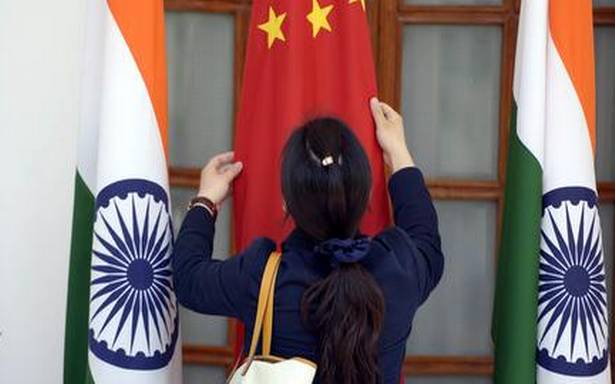China still remains the largest source of critical imports for India, from mobile phone components to pharmaceutical ingredients, and India is working on a multi-pronged strategy to reduce this reliance, which is a bigger concern than the imbalance in trade.
“The trade deficit is not in dollars, it is in overdependence,” said Sanjay Chadha, Additional Secretary in the Ministry of Commerce and Industry, speaking at the All India Conference of China Studies (AICCS), organised by the Institute of Chinese Studies (ICS) Delhi and Indian Institute of Technology Madras (IIT-M).
“A mobile phone requires 85% content coming from one country. If China were to stop the active pharmaceutical ingredients (APIs) for penicillin, we would not be able to produce it in this country. When somebody controls your production, that is a sentiment which raises concern.”
PLI scheme
Mr. Chadha said that India was working on a multi-pronged strategy to reduce this dependence, ranging from the Production Linked Incentive (PLI) scheme to boost domestic manufacturing, a global effort involving India’s foreign missions to find alternatives to China, and the use of free trade agreements (FTAs) with other trading partners.
COVID-19 had helped accelerate this change. When production in China was hit early in 2020, although its economy would recover by the summer and become the only major economy to avoid contraction last year, India shared with its foreign missions lists of items critically dependent on China, following which the missions linked up with suppliers in their countries.
Mr. Chadha, however, sounded a note of caution, suggesting this process was at the beginning, not the end. “We have to keep in mind China is still our largest source of imports for critical items,” he said, “and our pharmaceuticals and electronics sectors are hugely dependent on China.”
What offered opportunities for India was the push from many countries to not necessarily relocate from China – which still remains integral to global supply chains – but to diversify, with future capacity expansion up for grabs. The PLI scheme is hoping to capture that diversification. “If 85% of my components [for mobile phones] is dependent on one country, should I not have a production linked incentive to have the big companies come here? We have seen Apple start manufacturing in India. The PLI is going to accelerate that investment.”
Mr. Chadha said this was “not so much a China obsession as it is to try and make supply chains resilient, either by way of adding or diversify sources”.
China still remained the biggest source of India’s imports, but imports last year fell 10.8%, the lowest since 2016. Two-way trade in 2020 reached $87.6 billion, down by 5.6%, while the trade deficit declined to a five year-low of $45.8 billion.
Mr. Chadha noted that steel imports had fallen from a high of $2.8 billion to less than $1 billion, with China replaced by South Korea in part because of an FTA. India in 2019 withdrew from the Regional Comprehensive Economic Partnership (RCEP), which would have put India and China in the same trading bloc. “The FTA,” he said referring to the example of steel, “is resulting in diversification for free.”
Indian exporters’ struggle
On the trade front with China, he said India’s exporters had struggled for years but made little headway because of a number of non-tariff barriers. In 2018, both sides signed a number of protocols, including for rice and tobacco, but “none of this materialised in substantial trade”.
He put this down to both the opacity of the market and political considerations. “I was a part of the sugar exporters who went and negotiated, they gave a rate which was $40 lower than Pakistan,” he said. “They couldn’t make headway because they kept saying that is a different strategic relationship, under which they are taking decisions.”
India’s exports to China did, however, cross $20 billion for the first time last year, with an increase in iron ore exports by 88%, according to Chinese customs data.
Mr. Chadha said there was also a significant jump in the export of marine products such as shrimp, which has grown from a few million dollars to almost $1 billion.
Source: Read Full Article

